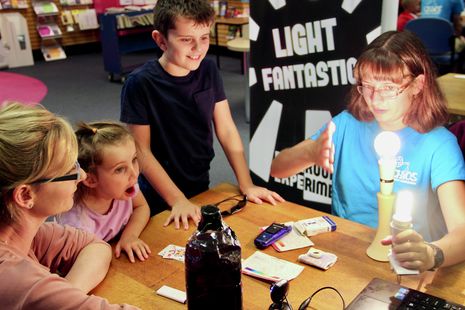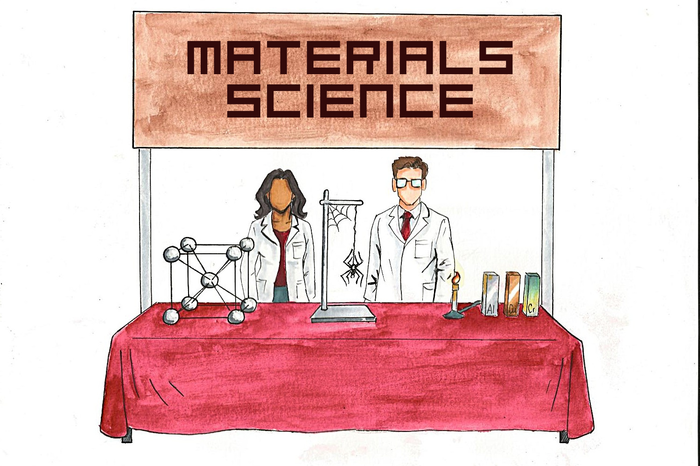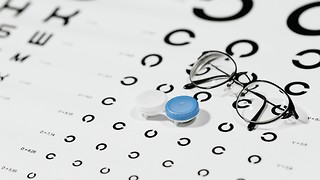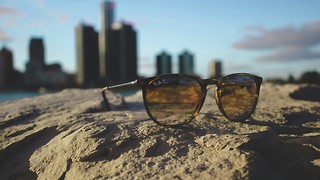Making science accessible to everyone: in conversation with Cambridge Hands-On Science
Meet the student-run outreach group inspiring the next generation of scientists

“We can show children that science isn’t a ‘boring’ subject”. This is the aim of Cambridge Hands-On Science, better known as CHaOS, a student-run outreach group that organises volunteer-led science demonstration workshops for children. I sat down with CHaOS volunteers and committee members to learn more about the group’s impact.
Having grown out of the Cambridge Student Science Week group set up in 1998, CHaOS has expanded considerably since their origins. They run events throughout the year, with the highlight of these being their summer roadshow. For seven weeks in July and August, a group of volunteers tours the country, visiting schools, public libraries, festivals, museums and scout jamborees to demonstrate their experiments, which range from cantilever bridges to cuddly microbes.
Those I spoke to were hugely passionate about demonstrating, with many commenting that taking part in CHaOS has changed how they engage with their subject. Physics PhD student and secretary John told me, “The stereotype is [physics is very] abstract […][demonstrating] has taught me to look deeper: what does this term mean? I can memorise the equation, but is there also a way that I can derive it from more common-sense arguments?”.
“For seven weeks, a group of volunteers tours the country to demonstrate their experiments, which range from cantilever bridges to cuddly microbes”
For co-president Isobel, who began demonstrating in her first year, volunteering has offered a way to engage with science at a different pace. “Finishing my first term, I was quite overwhelmed […] you’re in this Cambridge bubble – [CHaOS] reminded me that I do really like science, and it can be exciting, fun and inclusive […] it was like a breath of fresh air”. Even though she’s on the committee, “I still demonstrate as much as I can”.
Jeovana, a veterinary medicine student whose first summer roadshow was this year, enjoyed her experience so much it’s influenced her plans for the future: “the fact that I enjoyed [teaching] so much […] I am interested in pursuing a career more on the teaching side”. While challenging – “you have to think of how to answer in a way that they might understand” – demonstrating has offered her valuable skills too, “especially in a career [in which] you have to try to change a very complicated science subject to a simple thing to tell your client”.
Safety officer Jessica, a Chemistry PhD student, has also found the communication skills she’s gained from CHaOS to serve her in other areas. “I presented a poster at a conference earlier this year, and found that was almost identical to doing a CHaOS experiment – you’re trying to get people interested and excited in the science you’re presenting.”
“CHaOS aims to tap into this natural desire to learn to dispel the preconceptions children might have surrounding science, showing them it isn’t a ‘boring’ subject”
For many, the most rewarding part is seeing the impact they’re having on the children. Isobel reflected, “I remember being a kid and being excited about science […] it’s nice to help ignite that excitement in other kids”. Jessica told me that making pH indicator using red cabbage was one of her favourite experiments for this reason: “seeing the kids’ faces when you add the indicator to lemon juice and it turns bright pink and they’re so excited about it […] that’s a really fun one”.
This avid enthusiasm was something I noticed myself when demonstrating for CHaOS, and every volunteer I spoke to had a similar story. John told me, “If a kid’s interested they will just talk to you for ages and ages […] they don’t have all the preconceptions that school might provide […] [whereas] a kid in secondary school, they see physics and think, ‘oh, that’s the class with all the equations’”. CHaOS aims to tap into this natural desire to learn to dispel the preconceptions children might have surrounding science, showing them it is not a ‘boring’ subject.
The summer roadshow is crucial in ensuring this important work can extend as far as possible, bringing hands-on science to children who might otherwise not have been exposed to it. Jessica recalled, “One of the schools we went to this year, the teacher was saying that some of the kids had never left the village […] we could bring exciting science to them”. Jeovana echoed this about school visits: “The kids and parents who tend to go to [public events] already have an interest in science […] doing outreach in primary schools especially gives them that exposure”.
“The people I met during CHaOS helped me become a better volunteer, better explainer, and a better scientist”
CHaOS events are subsidised by external sponsors, so it’s free for the schools they visit. John explained, “we try to visit schools with a higher-than-average percentage of children entitled to free school meals for more effective outreach. Seeing the whole class allows us to chat to the kids who might not already have an interest in science, ask for science kits for their birthdays, or go on trips to museums”. As Isobel told me, this means “You get to talk to kids who don’t think they’re made for maths, or they’re not a sciencey person”.
The resulting change in the children’s perception of science is clearly illustrated by the ‘draw a scientist’ activity the group runs before and after events. Jessica recalled that initially, “You see a lot of scientists with crazy hair doing explosions and they all call their scientists geniuses, and often scary or old. Then [afterwards] we get drawings that look more like the demonstrators. Sometimes you can match them up to individual demonstrators […] and they’re much more likely to describe the scientists as kind and hardworking”.
No matter how long they had been involved, everyone I spoke to said doing CHaOS alongside their degree had been one of the best parts of their experience at Cambridge.
John, who has been part of the group since his first year, told me, “I didn’t start off being good at [demonstrating]…I’m pretty sure, four years ago, I was pretty bad at explaining things. But it’s the people I met during CHaOS that helped me become a better volunteer, better explainer, and a better scientist…I think that’s why I stuck with CHaOS for so long”.
 News / SU reluctantly registers controversial women’s soc18 December 2025
News / SU reluctantly registers controversial women’s soc18 December 2025 Features / Should I stay or should I go? Cambridge students and alumni reflect on how their memories stay with them15 December 2025
Features / Should I stay or should I go? Cambridge students and alumni reflect on how their memories stay with them15 December 2025 News / Dons warn PM about Vet School closure16 December 2025
News / Dons warn PM about Vet School closure16 December 2025 News / Cambridge study finds students learn better with notes than AI13 December 2025
News / Cambridge study finds students learn better with notes than AI13 December 2025 News / Uni registers controversial new women’s society28 November 2025
News / Uni registers controversial new women’s society28 November 2025










